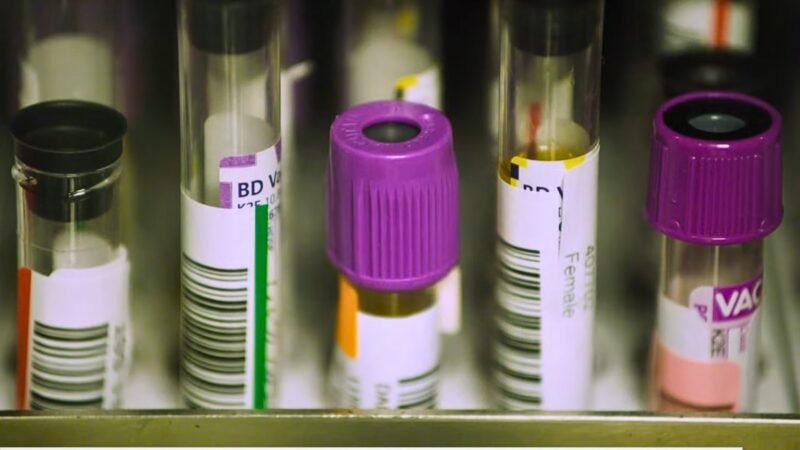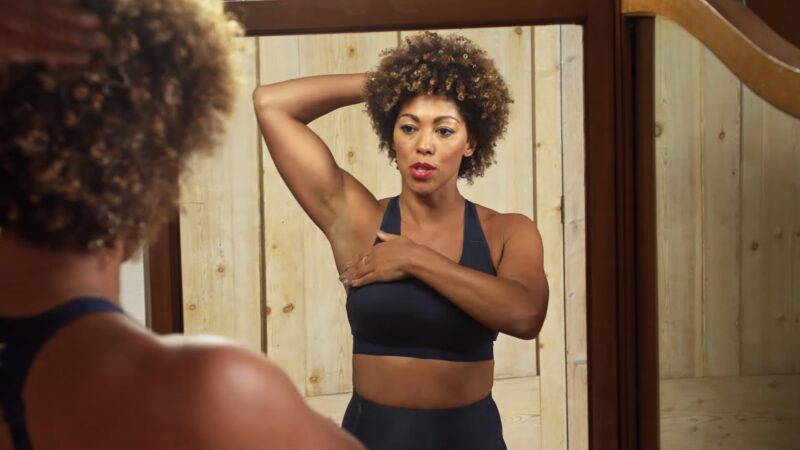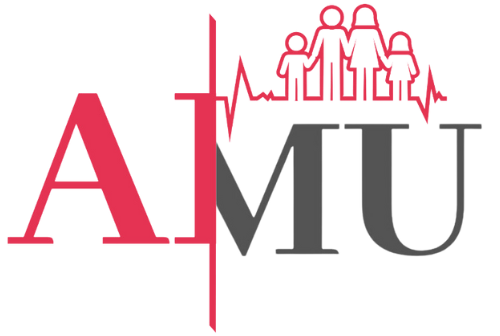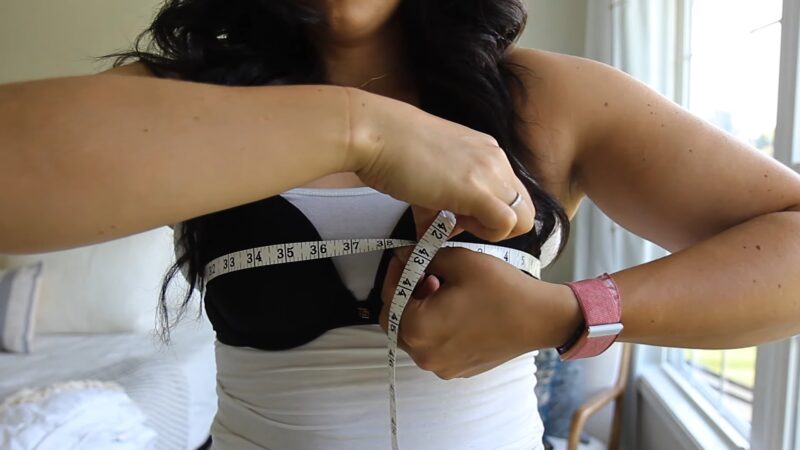Breasts can undergo changes throughout a woman’s life. Some changes are expected, like those that occur during puberty or pregnancy.
However, a sudden increase in their size might raise eyebrows. It’s essential to understand the underlying reasons behind these changes, both to ensure your health and to feel more in tune with your body.
In this article, we’ll talk about eight reasons for a sudden increase in breast size.
1. Hormonal Changes

Hormones play a crucial role in shaping and changing our bodies, including breast size. Fluctuations in certain hormones can lead to unexpected changes.
Menstrual Cycle
Every month, the female body prepares for a potential pregnancy. Progesterone and estrogen levels rise after ovulation, causing the breasts to swell and retain water.
This natural process can sometimes result in a noticeable increase in size, which typically reduces after menstruation begins.
Pregnancy
During pregnancy, the body undergoes numerous hormonal changes to support the growing fetus. One of the most noticeable physical changes is the enlargement of the breasts.
As the body prepares to breastfeed, milk-producing cells increase, and more blood flows to the breasts, causing them to enlarge and become more sensitive.
2. Weight Gain
Our breasts are composed of fatty tissues. Consequently, when someone gains weight, a portion of that fat may end up in this body part, leading to an increase in size.
Distribution of Body Fat
Every individual’s body distributes fat differently. Genetics plays a role in this. Some women may find that when they gain weight, their breasts increase more significantly in size compared to other parts of the body.
Understanding one’s body type can help anticipate such changes.
Diet and Lifestyle
A diet high in fat and carbohydrates can lead to weight gain, which may reflect in the breast size. Consuming processed foods, and leading a sedentary lifestyle can contribute to weight gain and, consequently, an increase in size.
3. Medications and Treatments
Certain medications and treatments can lead to a change. It’s essential to be aware of these potential side effects, especially if someone notices a sudden change after starting a new medication.
Birth Control Pills
Oral contraceptives or birth control pills contain hormones, typically a combination of estrogen and progestin. These hormones can cause enlargement in some women. It’s a side effect that’s often temporary and might reduce once the body adjusts to the medication.
Hormone Replacement Therapy (HRT)
HRT is used to replace hormones that a woman’s body does not create naturally, especially during menopause. Estrogen, which is commonly used in HRT, can cause enlargement.
It’s essential for those on HRT to have regular check-ups and monitor any changes in their breasts.
4. Aging Process
As we age, our bodies undergo numerous transformations, both externally and internally. The breasts are no exception to these changes, and their size and shape can be influenced by the natural aging process.
Gravity’s Impact
Over time, the ligaments that support the breasts can stretch due to gravity. This can result in breasts that appear larger but may also seem more elongated or saggy. Regularly wearing supportive bras can help counteract this natural pull of gravity.
Redistribution of Fat
As women age, body fat tends to be redistributed. Post-menopause, the body may store more fat in the breasts than in the hips or thighs, leading to enlargement, even if there’s no significant weight gain.
5. Medical Conditions

Some medical conditions can directly impact breast size. It’s always essential to consult with a healthcare professional if someone suspects an underlying medical reason for the sudden change.
Fibrocystic Breasts
Fibrocystic breast changes are characterized by the formation of lumps or cysts. This condition can cause the breasts to feel fuller or larger, especially during the menstrual cycle. While it’s benign, regular monitoring is crucial to ensure no malignant changes.
Infections or Inflammations
Conditions like mastitis or breast abscess can lead to swelling and enlargement. These conditions often come with pain, redness, and warmth in the affected area and may require medical intervention.
6. Environmental and Lifestyle Factors
Our surroundings and the lifestyle choices we make can surprisingly have an impact on our breast size. This may come as a surprise to many, but certain environmental exposures and habits can play a role in sudden enlargement.
Exposure to Estrogen Mimickers
Chemicals called xenoestrogens, which are found in many products around us, can mimic the body’s natural estrogen. These are present in certain plastics, pesticides, and even beauty products.
Chronic exposure to high levels of xenoestrogens can potentially lead to an increase in size due to their estrogen-like activity in the body.
Smoking and Alcohol Consumption
While most people are aware of the many health risks associated with smoking and excessive alcohol consumption, few realize that these can also impact breast size.
Some studies suggest that the toxins in cigarettes can lead to sagging of the breasts, making them appear larger. On the other hand, alcohol can increase estrogen levels in the body, leading to an increase in size.
7. Breastfeeding

Breastfeeding, a natural process after childbirth, is often accompanied by changes in the breasts. Engorgement and milk production can significantly influence the size of the breasts during this period.
Engorgement
In the first few days after childbirth, as the milk supply begins to increase, breasts can become engorged. This means they’re filled with milk, blood, and other fluids, causing them to feel hard, swollen, and painful.
The sudden enlargement typically subsides as breastfeeding routines are established and the baby drains the milk regularly.
Prolonged Lactation
While most women notice a decrease after weaning, prolonged lactation can keep the breasts enlarged for an extended period. It’s a natural response to the demand for milk.
Over time, as breastfeeding reduces or stops, the breast size usually returns to its pre-pregnancy state or is slightly different due to post-pregnancy body changes.
8. Tumors and Growths
While many factors leading to breast enlargement are benign, it’s crucial to be aware of the potential for more severe underlying causes, such as tumors. Any unexplained changes should be evaluated by a healthcare professional.
Benign Tumors
Fibroadenomas are non-cancerous tumors that can lead to a noticeable increase in size. They are solid, round, rubbery lumps that move freely in the breast when pushed and are most common in women in their 20s and 30s.
Regular monitoring is essential to ensure they remain benign.
Malignant Tumors
Breast cancer is a malignant tumor that starts in the cells of the breast. An unexpected increase in the size of one breast or a part of it can sometimes indicate the presence of a malignant tumor.
Early detection and treatment are crucial, so it’s vital to attend regular screenings and consult with a doctor about any unusual changes.
FAQs

Can certain exercises lead to enlargement in breast size?
No, exercises in and of themselves can’t do this since breasts are primarily made up of fatty tissue and glands, not muscles. However, exercises that strengthen the pectoral muscles beneath the breasts, like push-ups or chest presses, can make them appear firmer and slightly lifted, giving the illusion of larger breasts.
Can stress affect breast size?
While stress doesn’t directly increase the size, it can lead to weight gain in some individuals due to changes in eating habits or increased cortisol levels. If someone tends to store fat in the chest area, this weight gain can lead to enlargement.
Do caffeine and coffee consumption influence breast size?
There’s a popular belief that caffeine can cause breast shrinkage, but the evidence is not conclusive. However, excessive caffeine consumption can lead to hormonal fluctuations in some people, potentially causing breast tenderness or swelling during menstrual cycles.
It’s essential to monitor how one’s body reacts to caffeine intake.
Can wearing a specific type of bra change breast size?
No, it can’t. However, certain bras, like push-up bras or padded bras, can enhance the appearance. It’s essential to wear the correct bra size for comfort and proper support.
Are there natural supplements or herbs that can cause enlargement?
Some believe that herbs like fenugreek or saw palmetto can increase breast size because of their phytoestrogen content. Phytoestrogens are plant-derived compounds that mimic the body’s natural estrogen.
However, scientific evidence on the effectiveness of these herbs is limited, and they might come with side effects. Always consult with a healthcare provider before trying any supplements.
Does massage affect breast size?
Massaging the breasts can increase blood circulation and stimulate the supportive tissues and lymph circulation, potentially leading to firmer breasts. However, it doesn’t necessarily increase their size.
Some believe that regular massage can help in the absorption of phytoestrogens or natural oils applied to the skin, influencing the size, but concrete scientific evidence is lacking.
Summary
From natural hormonal changes and the aging process to external factors like medications and environmental influences, the reasons behind these changes are as diverse as they are interconnected.
Regular self-examinations and routine medical check-ups are paramount, ensuring that any sudden or unexpected changes are addressed promptly.
While many of the factors leading to breast enlargement are benign and natural, staying informed and proactive can pave the way for timely interventions when necessary.

